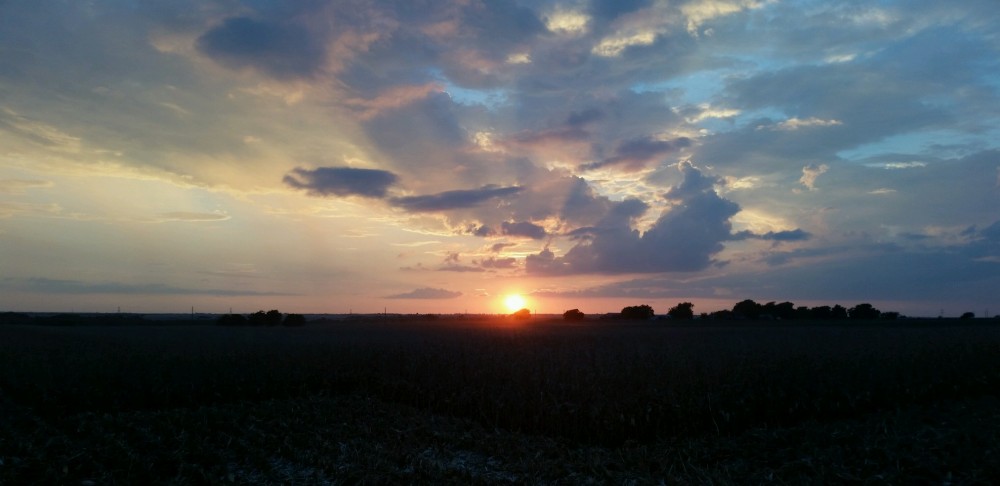We’re #1! Uncle Joe Stories just ranked #1 on a Google Search under its name, “Uncle Joe Stories.” Thank you all for visiting and reading. The purpose and goal of this site is to provide you materials that you enjoy reading and stories that you can read and tell to others. The content is all new and original. For example, the very first wake-up-in-the-morning thought for the Mary Story to be published tomorrow is just a week old today. We appreciate you all so very much. Please keep stopping by.
Now, back to the blog. Thursday is marching on and I wish you each an excellent June 14th.
Hail was in Dallas yesterday! The text message from my daughter-in-law at 6:36 p.m. reads, “Whoa, had to pull over to avoid giant ice falling from heaven.” The next text is the picture of a piece of hail the size of a tennis ball. They are fine. The car is a bit dented but no windows were broken. From the pictures on the Internet, a lot of windshields were busted and quite a few skylights in homes and offices shattered. Thankfully, no injuries were reported.
Update: The paper reported this morning, June 15, 2012, that there were some minor injuries. “There were no deaths, serious injuries or sustained power outages.”
What is hail? Is it giant ice falling from heaven? Are angels sipping grapefruit slurpees and sloshing down icy chunks over the giant cup lips. Are the celestial cherubs playing chilly tennis and smashing one ice ball and then another over the cloudy fence?
On Earth (as opposed, I suppose, to what it might be on Saturn where there is no or little water), hail is the precipitation (or rain) of frozen water from the sky in the form of balls or lumps of ice, called hail stones. The individual ice ball or lump forms in a thunder or cumulonimbi cloud. A tiny droplet of water is caught in a cold updraft, freezes solid forming a little ice pebble, grows like an onion as it rises and water droplets and vapors freeze in layers on its surface, becomes bigger and bigger, until it weighs so much that it stops and starts to drop, growing ever larger as it falls, leaving the cloud and crashing to the ground. That is the life of an individual hail stone. A bunch of hail stones make a hailstorm and that is what happened yesterday in Dallas, Texas.
Update: In today’s paper, there is the following delightful further explication of hail formation, which adds to the life of the individual hailstone described above: “A hailstorm needs lots of warm, moist air near the ground, subfreezing air high above and a strong push to get the warm air moving up. . . . Ice pellets came together high in the clouds and fell, only to be pushed back up by powerful updrafts, where the pellets got another coating of ice. Over and over and over and over. If the udraft is strong enough, the hail gets held aloft, where it collides with other hail and raindrops, allowing it to grow larger. Eventually, hailstones get too heavy for updrafts to hold them aloft, and they fall. Wednesday’s storm had particularly powerful updrafts. The National Weater Service figures it takes updrafts with speeds of 81 mph to create a baseball-size hailstone and winds of 103 mph to produce a softball-size hailstone.” The paper reports we had “hail the size of softballs.” Wow! Thank you to The Dallas Morning News for their very helpful and wonderfully detailed science reporting.
Regions that see the most hail are the interiors of continents in the middle latitudes and the edges of mountain ranges. Hail is less common in the tropics because the air is warmer. The mountains of northern India have some of the largest hail in the world. China, central and south-eastern Europe and southern Australia have high numbers of hailstorms.
In the United States, where the states of Colorado, Nebraska and Wyoming meet is called “hail alley” and that area has more hail than any other place in North America. Cheyenne, Wyoming, is the “hail capital” with 9-10 hailstorms in a hail season. On July 23, 2010 (the day before my birthday), the largest U.S. hailstone fell in Vivian, South Dakota. It measured 8 inches (20 centimeters) in diameter and weighed 1.93 pounds (0.88 kilograms). You could have put a candle on that one and used it for a birthday cake.
Although hailstorms normally last only a few to 15 minutes, they can blanket the ground with up to 2 inches (5.1 cm.) of hail. On July 29, 2010, a foot (0.3 meters) of hail is reported to have accumulated, and depths to a meter (39.37 inches) have been reported.
In the Middle Ages, church bells rang and cannons fired to prevent hailstorms. After World War II, seeds scattered from planes. In Russia, rockets and artillery shells launched into the clouds. With all the noise, people grabbed the dog and ran for cover, which was good, because nothing seemed to work to prevent the hail.
Keep an eye to the sky, listen for the sirens, check the weather reports and move to cover. Giant ice falling from heaven is to be avoided. Let the angels play and wait until the slurpee chunks melt and the ice balls evaporate.
Thanks again for visiting,
Grandpa Jim
gpajim@unclejoestories.com
